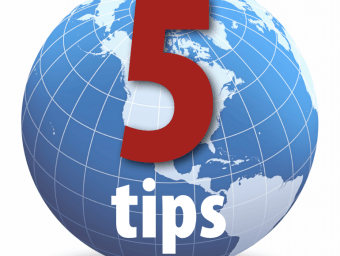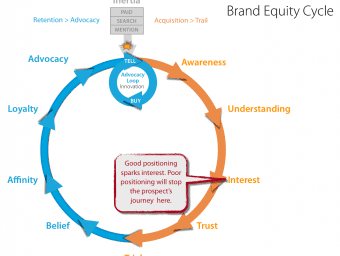Why content marketing is more than publishing content
The Cure for Content: Part II (read part I) If content is really king then why do most organizations still treat it like the court jes...
7 Mar 2024 7018 ViewsThe Cure for Content: Part II (read part I)
If content is really king then why do most organizations still treat it like the court jester? Under funded, non-prioritized, programs run by junior staff with minimal strategic ability are more the norm than the exception. A recent North American study by the Content Marketing Institute found that on average over half (56%) of those who claim to practice content marketing do so without a documented strategy. In other words, they make it up as they go along. Among poorly performing companies that number jumps to 89% operating without a plan. A European study by Hubspot shows that 71% of content marketers feel their organization’s commitment to content marketing is inconsistent or worse. Only 9% felt their company had truly embraced the concept.
Problems with content marketing

If content is really king then why do most organizations still treat is like the court jester?
This all translates into content marketing programs that fail to provide a business result. Which, in turn, has lead some to conclude that content marketing is just a lot of hype. For sure, the topic makes for tempting link bait and has attracted its share of snake oil salesman. But I’d argue that the problem isn’t that content marketing is a flawed concept. The real problem is that content marketing is rarely practiced by content marketers. What they are calling content marketing is actually content publishing. The difference between the two is essential to grasp if you want your brand to get better at attracting, retaining, engaging, and developing a loyal online audience.
It starts by reminding ourselves just what marketing is. Marketing involves working with product, price, place and promotion (Kotler’s 4 Ps) to influence demand in the market. Then consider the role of content. The driving force behind all content used in marketing is relevant facilitation. That is, helping prospective buyers or influencers in a way that is relevant to both their needs and your brand. This can be used to gain awareness and endear your brand to a prospect even before they are in buying mode.
Marketing and content marketing strategy
Publishing relevant, helpful information online is a useful promotional tactic. And if that is the extent of your content program then I’d say you are a content publisher but not a content marketer. To be a content marketer you would need to align your marketing (all 4 Ps) toward the idea of relevant facilitation. Here is how that type of marketing program might look.
Product: Product refers to the totality of your offer to the market.
Your organization may see facilitation as a promotional tactic, but chances are your prospects don’t share this view. To them, a brand’s product is no longer restricted to the widget it manufactures. From their perspective a brand’s entry-level product is the company’s expertise demonstrated through the category-related information it shares in the form of content to facilitate its audience.
The content marketer no longer sees content as an optional value-add to their product. They understand that to the consumer it is a new service component that is as much a part of the product offer as any other feature. The organization accepts that the brand’s purpose has shifted (e.g. from selling fishing lures to helping people fish). So they prioritize and fund content development as they would other aspects of product development that are deemed essential for the product to meet consumer expectations and compete.
Place: Place refers to how consumers can access products including how products are distributed.
Place has been vastly extended with the internet allowing brands to distribute digital products globally in an instant (as 3D printing advances the same may soon be said of many non-digital products). It may seem like the tail wagging the dog, but since all brands have been given this incredible distribution system, wouldn’t it make sense to at least explore expanding the brand’s offering into the realm of digital content to take advantage of it?
Content marketers are doing just that by creating relevant and helpful digital assets like helpful articles, videos and apps that they can deliver to their audience in real-time. The content marketer is constantly exploring how digital distribution could be used in different contexts to further facilitate their prospects and thus create entirely new marketing opportunities.
Price: From a seller’s perspective price refers to the sum total of what a brand receives in return for its product.
Most companies spend a lot of effort to make sure the prices they place on their tangible products results in a positive value balance for the buyer and profit for the company. If content is now part of the brand’s offer then the same logic should be applied.
On our blog you’ll also find more information about the difference between sales marketing and branding.
Content in marketing
Content marketers have redefined the way consumers can compensate their brand to include the hierarchy of non-monetary options listed below.
- Visit – (i.e., opening a web page) Increases site traffic
- Consideration- (i.e., sticking around to consume some content) Increases time on page
- Acknowledgement – (i.e., like, rate, favorite or comment) Provides a public receipt that the content was consumed
- Follow – (i.e., subscribing to your social feed or channel) Opens a passive channel of contact
- Information – (i.e., answering a survey or submitting personal data) Provides market intel
- Permission – (i.e., submitting an email or phone number) Opens a one-on-one channel of contact
- User Generated Content – (i.e. adding posts, pics or other UGC) Enriches your brand’s content and draws traffic
- Amplification – (i.e., sharing your content with their proprietary audience) Promotes brand awareness and trust while boosting site traffic
- Advocation – (i.e., actively endorsing your brand to their proprietary audience) Promotes awareness, understanding, interest and trust in the brand while driving traffic.
I’ve ordered these according to level of engagement and assume that each deeper level of engagement is worth more to the brand than its predecessor. You can order and weigh them in whatever manner suits you. The take-away here is to assign the right asking price to the right content.
Asking for an address and telephone number may be OK to download a 100 page E-book, but you surely wouldn’t be here now if I had made that a prerequisite to read this blog post. I’d be over-charging you. Whatever you do, just never give content away for “free”. Understand what it is worth to your audience and always be sure to receive what the market will bear in exchange for your content.
Promotion: Refers to communication from the brand to the market in an effort to influence demand.
Back at the turn of the century (14 years ago) if someone had a question about a certain product they simply went to the brand’s website and got the information they needed. That was online promotion. But our online habits and buying process has changed, in large part reshaped by the internet itself. As the internet matured, more trustworthy information about brands and products became increasingly available on social sites and review sites. And in this burgeoning peer-to-peer exchange someone was being left out of the conversation – the branded website.
Content marketing distribution
Content marketers understand that Google, YouTube and Wikipedia have replaced the brand site as first stop in the hunt for product information. In fact the traditional brand website is often the last place people go and often after they have made their purchase decision. So, yes there still needs to be information on your product and company. But that is no longer the main attraction. At least not if you would like to have your say earlier the purchase decision process.
Content marketers understand this. That’s why they don’t constrain relevant facilitation to their blogs or social assets. They make it the centerpiece of their brand website from the landing page to the about us section. The impression it creates first and foremost is “We understand your problem and we are here to help”.
It’s important to remember that the verb “promote” is not synonymous with “sell”. Promote means to help exist, flourish or advance. For brands to flourish online today they need to facilitate. If you focus only on sales-related promotion and neglect the content component of your brand’s offer then it is possible that you will sell today but it will likely cost your brand in terms of having to discount to move product, having to develop a costly Adwords addiction to drive traffic and having to invest in ever-elaborate/expensive stunts to drive engagement.
It may seem counter-intuitive, but you may save your brand a fortune in both short-term earnings and long-term brand equity by investing adequately in content marketing and online networking to complement traditional sales messaging.
Click and find out more about digital growth strategy.
Content marketing – conclusions
Great content is a by-product of a brand’s broader commitment to facilitating its audience. Until an organization sees both the value and necessity of embracing this idea, it runs the risk of alienating prospects. Specifically, companies wishing to tap into the power of content marketing should look beyond their blogs and be sure to realign their Product, Price, Place and Promotion (Kotler’s 4 Ps) to the new demands of an information economy.
Like this post? You'll find more marketing insights in my new book: International Brand Strategy: A guide to achieving global brand growth, now available from booksellers globally. Order your copy here.






